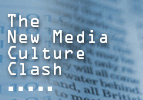



Student comfort with the visual and desire to use multimedia tools emphasizes the need to develop a new approach to rhetoric and writing pedagogy (Hocks 2003; Luke 2000). However, because technologies are changing so rapidly, a single set of standards or skills will not suffice (Cope and Kalantzis 2000). What is required is a meta-literacy; an ability to master new literacies. In this vein, Cope and Kalantzis propose a pedagogy of multiliteracies that welcomes modes of representation beyond just language and allows for dynamic interaction of those modalities. This need for meta-literacy echoes the New London Group’s call for a meta-language that can be seen “as a tool kit for working on semiotic activities, not a formalism to be applied to them. We should be comfortable with fuzzy-edged, overlapping concepts” (2000, 24).
Despite this need, it is unlikely that a uniform pedagogy will emerge quickly. We find ourselves in a “chicken and egg” cycle unsure of what must happen first. Faculty are uncomfortable and lack training and experience with digital media techniques. As a result, they do not compose digital arguments for scholarly publication, teach digital rhetoric skills widely across English curricula, or explicitly encourage student production of digital media. Because graduate students (generally the next generation of college and K-12 teachers) do not get digital production experience, the cycle continues and progress across the continuum from print-based conventions to multimodal, digital media moves at a crawl.
Meta-literacy & multimodal pedagogy • A focus on graduate students • Interview methodology • Works cited • Home